page 53
Note: the contents of this page as well as those which precede and follow, must be read as a continuation and/or overlap in order that the continuity about a relationship to/with the dichotomous arrangement of the idea that one could possibly talk seriously about peace from a different perspective as well as the typical dichotomous assignment of Artificial Intelligence (such as the usage of zeros and ones used in computer programming) ... will not be lost (such as war being frequently used to describe an absence of peace and vice-versa). However, if your mind is prone to being distracted by timed or untimed commercialization (such as that seen in various types of American-based television, radio, news media and magazine publishing... not to mention the average classroom which carries over into the everyday workplace), you may be unable to sustain prolonged exposures to divergent ideas about a singular topic without becoming confused, unless the information is provided in a very simplistic manner.
Let's face it, humanity has a lousy definition, accompanying practice, and analysis of peace.
Let's take a look at peace through a lens of music as part of the western tradition which focuses on the usage of Triads. However, in mentioning triads, it is of value for the reader to appreciate that music has its own examples of dichotomies such as loud/soft and Major/Minor (diatonic) scales, repose/tension, male/female voices, monophonic/polyphonic, consonance/dissonance, not to mention the usage of black/white piano keys (and not other colors)... though one may notice one, two, or three pedals beneath... that is if there are any at all.
In music, (a triad is) a chord made up of three tones, called chord factors, of the diatonic scale: root, third, and fifth. The system of diatonic triads is the basis of tonal harmony in music. 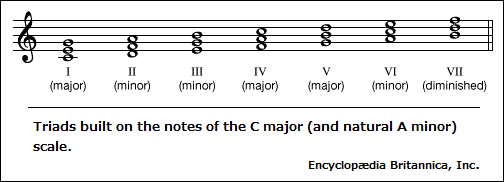 Triads are classified according to intervals formed above the root. If the factors of the triad are a major third and a perfect fifth above the root, the triad is a major triad; if a minor third and a perfect fifth, it is a minor triad. These are defined as consonant triads. If the third is major and the fifth is augmented, the triad is called an augmented triad; if the third is minor and the fifth is diminished, the triad is a diminished triad. Augmented and diminished triads are dissonant. In actual music, any factor of a triad may be duplicated and reduplicated in any octave; this is called doubling and is found everywhere in polyphonic music, both vocal and instrumental. As long as the notes are exclusively triadic factors and their octave equivalents, the chord is still considered a triad.  Mark DeVoto: Professor of Music, Emeritus, Tufts University. Editor, International Alban Berg Society Newsletter, 1968-75; author of numerous articles on musical topics. Mark DeVoto: Professor of Music, Emeritus, Tufts University. Editor, International Alban Berg Society Newsletter, 1968-75; author of numerous articles on musical topics. Source: "Triad." Encyclopædia Britannica Ultimate Reference Suite, 2013. |
So what has music got to do with an analysis of peace? Indeed, is peace a type of music? Is war a type of music? While we may assign a particular song or piece of music to peace and/or war, does music share any extent relevance or vice versa? Is peace a melody? Is it a symphony? Is war represented by a bugle charge or call for retreat? And yet, why is it that most people don't recognize the absence of a bugle sound during moments when there is no charge or retreat? Whereas a bugler may sound "taps" at a funeral, at reveille or dusk, all of these musical events are situated to represent extreme moments of activity. In fact, all of music may well be expressing extreme moments of activity even when we attach a label interpreted as quiet, peaceful, serene, etc... In fact, music has a long standing placement in human cognition. There are underlying patterns which can be enumerated such as the "hook" reference in popular songs that refers to a repetition-of-three word, beat and/or phrase. No less, many musical groups have used a bass-lead-rhythm ensemble of guitars, while a person checking the functionality of a microphone may say "testing: 1-2-3", and a band leader may initiate the beginning of synchronized playing by saying "uh one, uh two... whereby everyone starts playing at the unvoiced third event". However, it can not be ascertained whether musical groups in the past used the same "three" formula or some variation thereof.
While many people do not view terms from the perspective of enumerated cognition for analysis, a discussion of peace (and/or war) without a musical accompaniment no doubt references basic cognitive patterns. Applying the topic of music to such an analysis is a means of applying a different perspective. For example, if the reader became known of a bit of personal history of the current writer of this page, it might well afford an understanding of how music can be looked at from a non-music perspective:
Long ago as a teenager, while driving down a street listening to the radio, the music vanished and all that could be heard was the words. While the experience was felt to be rather weird, panic did not set in and instead the channel was changed. However, the same thing occurred with each additional turning of the nob— to see if there was something wrong with the radio, only to discover that there came a moment in later days in which all music vanished. Only the words of what was being said by the singers could be heard. And so I listened and came to realize (or at least interpret) that the words of the singers was a type of personal "philosophy" about a person, place, or other experience... and their philosophy was quite often very childish or illogical. In fact, what was being said was often quite stupid... intellectually speaking. Without the presence of the music, what was being said was like listening to an idiot... someone who had very little education, if any. And though this is not the only personal experience which differed from friends and family members, it gives some appreciation of what other experiences involving changes in the other senses brought to bear on my consciousness. Indeed, I actually lived in a different reality through which I have had to navigate without resorting to "distractions" such as drugs, drink, criminality, promiscuity, or insanity. Nonetheless, the topic of music can provide some realization of underlying cognitive patterns which come to be repeated and correlated to our analysis of peace.
The bugle has two coils with three valves, as part of a history of development that a short review thereof may be of some interest. (And now that you have become aware of the presence of enumerated cognitive patterns, please notice the lineup of "threes" examples in the article which are underlined... and the two coil version having been preceded by a single loop design, but there is no three coil version... at least not at this point in history):
(The bugle is a) wind instrument sounded by the vibration of the lips against a cup mouthpiece. As a modern military signaling instrument, it dates from about 1750, when Hanoverian Jäger (light infantry) battalions adopted the semicircular copper horn with widely expanding bore, used by the Flügelmeister, an official of the hunt. English light infantry did the same, the German flügelhorn, or horn, taking the name bugle horn (from Old French bugle, derived from the Latin buculus, "bullock"). This early semicircular bugle was pitched in C or D, often lowered to B by a coiled crook, a detachable piece of tubing. From about 1800 it was once-looped in trumpet shape; the British design, twice-coiled with narrow bell, became official in 1858. Bugle calls require only the second to sixth notes of the natural harmonic series (notes produced by whole and partial vibration of the enclosed air column), written c'–g'–c"–e"–g" (c' = middle C) but sounding a tone lower. The calls are grouped as regimental calls, field calls, and routine calls. Some of the most familiar, including the reveille and the last post, remain virtually unchanged since 1815, if not earlier. Other calls, especially field calls, were originally played at a lower pitch, making use of the C below middle C (the first harmonic, or fundamental). The first official list of bugle calls was issued in 1798. The popularity of the bugle horn at the end of the 18th century is reflected both in the publication of many bugle marches with military band and in the featuring of the instrument in light operas. In 1810 Joseph Halliday patented the key bugle, or Royal Kent bugle, with six brass keys (five closed, one open-standing) fitted to the once-coiled bugle to give it a complete diatonic (seven-note) scale. It became a leading solo instrument in military bands until replaced by the cornet. In France it inspired the ophicleide, its bass version. Valves were fitted to the same once-coiled bugle during the 1820s, the new instrument keeping the old name flügelhorn. It is pitched in B♭ and remains the principal treble brass instrument of continental military and brass bands. Soprano and alto versions in E♭ are sometimes used with it. Modern instruments are considerably narrower in bore than earlier ones. The valved bugle also gave rise to related instruments in the tenor, baritone, and bass ranges. Their names vary from country to country and often apply to more than one instrument. They include the baritone, euphonium, and the saxhorns (some of which are also referred to as flügelhorns). These instruments also vary in the degree to which they retain the bugle's characteristic wide bore. Source: "Bugle." Encyclopædia Britannica Ultimate Reference Suite, 2013.Valve In music, a (valve is a) device, first used in 1815 by musicians Heinrich Stölzel and Friedrich Blühmel of Berlin, that alters the length of the vibrating air column in brass wind instruments by allowing air to pass through a small piece of metal tubing, or crook, permanently attached to the instrument. Descending valves switch in extra tubing, lowering the fundamental pitch; the less common ascending valves cut air off from the tubing, raising the pitch. Valves enable players to produce notes lying outside the harmonic series of an air column the length of the original tubing (in relative pitch, C–c–g–c'–e'–g'–b♭' [approximately]–c"–d"–e", etc). Brass instruments normally have three descending valves; used in combination they can lower the pitch of the instrument six semitones. Two principal switching methods are used: piston and rotary mechanisms. Source: "Valve." Encyclopædia Britannica Ultimate Reference Suite, 2013.Voice types Musical practice for centuries has recognized six basic voice types: bass, baritone, and tenor in the male, in contrast to contralto, mezzo-soprano, and soprano in the female. Sex, therefore, is one of the first determinants of voice type in the two categories. Body type and general physical constitution represent the second determinant of the individual voice type because the laryngeal dimensions vary in fairly strict conformity to whether the body type is large or husky or frail or small. A tall, athletic male usually has a large, spacious larynx. Repeated observations show that short, dainty females tend to have a small and delicately built larynx. The intermediate voice types of the male baritone and the female mezzo-soprano usually represent the corresponding intermediate body types. The art of singing recognizes additional subdivisions. The voice of a basso profundo is extremely low and heavy. The lyric tenor possesses a high, light, and flexible voice. Still higher and lighter is the counter tenor (as used in singing oratorios) who is the male counterpart of the highest female voice found in the extra high and light coloratura soprano. The dramatic voices employed in the Wagnerian operas represent intermediate forms between a male tenor (or high baritone) and a heroically masculine body type. The female dramatic soprano is usually heavily built; her strong mezzo-soprano voice can produce the high soprano tones. The registers are related to voice types. As a general rule, the low voices possess a large range of chest voice with a much smaller range of head voice. The reverse holds for the high voice types, while baritone and mezzo-soprano assume an intermediate position. In the normal individual and the well-trained singer in particular, the midvoice encompasses one musical octave. As a further rule of thumb, the traditional and optimal transition tones follow a fairly stable and general pattern. The three female voice types usually show the first transition from chest to midvoice at the tones d1, e1, and f1, above middle c1, respectively. The second transition between midvoice and head register in the three female voice types is almost precisely one octave higher. An extra-low contralto voice may prefer to shift the two transitions at slightly lower frequencies, whereas a very high coloratura soprano may prefer the two shifts a semitone (halftone) higher. The two transition tones of the three male voice types are situated almost precisely one octave lower than the respective six female transition tones. It should not be overlooked that the specific features in male voices sound approximately one octave lower than in the female voices of corresponding type. This octave phenomenon stems from the larger dimension of the adult male larynx. (The musical custom of writing the tenor part on the soprano stave in contrast to the correct notation of bass and baritone in the bass clef is a misleading tradition that derives from an old custom of four-part writing, for the tenor always sounds one octave lower than the soprano.) Vocal ranges The individual ranges of the singing voice extend from about 80 cycles per second in the low bass to about 1,050 cycles per second in the "high C" of the soprano (all values are approximated). The lowest note of serious musical literature is a low B-flat with 58 cycles per second, used in bars 473, 475, 477, and 632 of the bass voice of the chorus in the fifth movement of Gustave Mahler's Symphony No. 2 (Resurrection). The highest is a high f3 with almost 1,400 cycles per second sung by the Queen of the Night in Mozart's Magic Flute. Exceptionally high soprano tones are no longer sung with vocal cord vibration but are produced in the flageolet (or whistle) register simply by whistling through the narrow elliptical slit between the overtensed and motionless vocal cords. When citing the exceptional vocalistic feats of singers from the classical bel canto era, it should not be overlooked that musical pitch has been rising markedly since those days. Concert pitch is presently standardized at 440 cycles per second for the international tuning tone a1. In the last half of the 18th century, the reference tone was at least one semitone lower. Harmonic structure A second attribute of vocal sound, harmonic structure, depends on the wave form produced by the vibrating vocal cords. Like any musical instrument, the human voice is not a pure tone (as produced by a tuning fork); rather, it is composed of a fundamental tone (or frequency of vibration) and a series of higher frequencies called upper harmonics, usually corresponding to a simple mathematical ratio of harmonics, which is 1:2:3:4:5, etc. Thus, if a vocal fundamental has a frequency of 100 cycles per second, the second harmonic will be at 200, the third at 300, and so on. As long as the harmonics are precise multiples of the fundamental, the voice will sound clear and pleasant. If nonharmonic components are added (giving an irregular ratio), increasing degrees of roughness, harshness, or hoarseness will be perceived in relation to the intensity of the noise components in the frequency spectrum. The primary laryngeal tone composed of its fundamental and harmonics is radiated into the supraglottic vocal tract (above the glottis). The cavities formed by the pharynx, nasopharynx, nose, and oral cavity represent resonators. Since they are variable in size and shape through the movements of the pharyngeal musculature, the palatal valve, and the tongue in particular, the individual sizes of the supraglottic resonating chambers can be varied in countless degrees. The shaping of the vocal tract thus determines the modulation of the voice through resonance and damping. As a general rule, a long and wide vocal tract enhances the lower harmonics, producing a full, dark, and resonant voice. Conversely, shortening and narrowing of the vocal tract leads to higher resonances with lightening of the voice and the perceptual attributes ranging from shrill and strident to constricted and guttural. Godfrey Edward Arnold: Professor and Director, Division of Otolaryngology, University of Mississippi Medical Center, Jackson, 1963–79. Coauthor of Voice, Speech, Language; Clinical Communicology.Source: "Speech." Encyclopædia Britannica Ultimate Reference Suite, 2013. |

And along with music comes the need for hearing. A reference to it is found on: Let's Talk Peace page 2, and also on page: Language 3's page 1.
With respect to Peace (and War), the following selection taken from an article which will follow in the next essay, relates to peace and war in a sort of analogical way labeled as consonance and dissonance:
The very foundation of harmonic music has been the interplay of consonance and dissonance. Consonance can be defined as the normal range of tone combinations accepted by theorists and composers of any given time as implying repose; dissonance, therefore, refers to any sounds outside that range. From the 19th century on, as writers increasingly explored the exact effect of music on the emotions, these two terms took on the aspect of value judgments. There is a tendency to confuse consonance with concord, or sweet sound, dissonance with discord, or clashing sound. This has led to a certain amount of confusion. Dissonance is in fact the prime element in the harmony that creates movement, and this has been recognized by composers from the dawn of the harmonic millennium. When the human ear recognizes a certain harmony as unstable within the context of a composition, it demands that this instability be rectified by the resolution to a stable harmony. Dissonance, therefore, has never been forbidden in music, for without it music would be hopelessly static. What has been clearly defined in each era has been, rather, the treatment of dissonance, the approach toward it and away from it in a smooth and logical manner so that the musical flow is of a continual tension and relaxation. Source: "Harmony." Encyclopædia Britannica Ultimate Reference Suite, 2013. |
With respect to music, one can also look at sound emitted by the mouth or otherwise, such as with a musical instrument. And although one would like to think that there are lots of instruments that have been and are being used by humans, the phrase "lots of instruments" conceals the fact that the type (percussion, wind, string...) and kinds (materials used in construction), is rather limited and is based on the limitations of human physiology involving a limited imagination as part of a conservation effect which accompanies a conservation of energy within a closed, and incrementally deteriorating system. In other words, the types and kinds of instruments is limited. No less, despite arguments against efforts directed towards establishing some historical review of when and where and by whom particular types and kinds of instruments have been developed as an expression of a developmental human cognition with respect to a given sequence; historical sequences can be ascertained from the perspective of an anthropological purview... even though someone may disagree with a particular compartmentalization.
While it may not be difficult for most readers to accept the realization that certain instruments preceded other types and kinds in given areas of historical culture and overall human culture, they may not be so readily able to grasp alternations in design and usage as expressions of human cognition... similar to the occurrences one acknowledges in the development of a person from infancy to old age. Nonetheless, there is a development taking place set against the backdrop of an ongoing planetary deterioration for which humanity must adopt a behavior of "adjusted rationalizations" in order to maintain some semblance of an equilibrium in terms of survival amidst the decay. And with respect to the following Britannica article, please note that the reader is assumed to know what is meant by the reference "musical sound". However, Let us first provide a description of what is meant by "musical instrument" before tackling the reference to "music" itself, from which later essays can be linked because of the portrayed fundamentalism of ideas place into the context of our discussion about peace. For example, is music or do musical instruments represent a cognitive alliance to/with peace? Was peace ever attributed to the provenance of one or more gods... since so very many things have been? For example, was there ever an ancient god of peace as there was a god of war? Or how about the power exhibited by someone yielding a musical instrument such as the Pied Piper of Hamlin? Surely the event is emblematic of a cognitive orientation or brain development in which the correlation between music with magic, mystery and "malevolent" (male-violent: violent male) capability (or even inclination) was expressed... instead of an inclination towards peace? No less, as another example, we see the usage of a bugle or horn instrument associated with the religious idea of final judgment as seen in Mormon and Islamic ideology.
When looking at music, musical instruments and human cognition with respect to the current foray into the topic of peace, in which enumerated references can be used in some instances, simplistic mathematical progression of the "from one... to two... to three" formula can alternatively be described with prefixes such as mono- di (or bi)- and tri-. And in as much as the history of counting has been revealing to illustrate the presence of three number words on different occasions being used by different cultures described as "one, two and many", truncations or abbreviations can well be cited such as monophony and polyphony, though the two-patterned "diphony" also is known. No less, while we can well describe a "quadraphony", we may come to realize that such a scheme is not open-ended to the extent it continues into infinity. And while we might well accept that our minds do not traverse any where near infinity in thoughts or complex conceptualizations, many people are inclined not to speak in terms of limitation or that there may be something in the Earthly environment which forces humans towards such a limited capacity. Take for example the representation of an instrument such as a two-reed oboe or bassoon, and a one-reed clarinet or saxophone. The apparent usage of a 3, 4, 5, etc., reed instrumentation is absent. And despite our rationalizations used to defend a particular usage or absence thereof, the fact remains that... when numerically quantified, we can pay witness to a limitation which provides an excuse for attendant mental states to play an attributive role, and are not called upon to exceed the simplistic formulations. For example, while we can correlate the black and white keys of a piano to the black and white pieces of a chessboard, and the usage of musical triads to the usage of moves in either a horizontal, vertical or diagonal (triadic) compilation, and no less the two teams (opponent/proponent) as similarities to consonance and dissonance; such parallel correspondences are not viewed in terms of theoretical dispositions of experimentally applied strategy within a set parameter of manipulable elements. Such an acknowledgment has further applicability in genetics and computerized artificial intelligence because both are confronted with circumstances of singularity, parity and triplicity, though other word/symbol-vocabularies of subject-specificity may be used.
Introduction (Musical Instrument)
(A musical instrument is) any device for producing a musical sound. The principal types of such instruments, classified by the method of producing sound, are percussion, stringed, keyboard, wind, and electronic.
Musical instruments are almost universal components of human culture: archaeology has revealed pipes and whistles in the Paleolithic Period and clay drums and shell trumpets in the Neolithic Period. It has been firmly established that the ancient city cultures of Mesopotamia, the Mediterranean, India, East Asia, and the Americas all possessed diverse and well-developed assortments of musical instruments, indicating that a long previous development must have existed. As to the origin of musical instruments, however, there can be only conjecture. Some scholars have speculated that the first instruments were derived from such utilitarian objects as cooking pots (drums) and hunting bows (musical bows); others have argued that instruments of music might well have preceded pots and bows; while in the myths of cultures throughout the world the origin of music has frequently been attributed to the gods, especially in areas where music seems to have been regarded as an essential component of the ritual believed necessary for spiritual survival.
Whatever their origin, the further development of the enormously varied instruments of the world has been dependent on the interplay of four factors: available material, technological skills, mythic and symbolic preoccupations, and patterns of trade and migration. Thus, residents of Arctic regions use bone, skin, and stone to construct instruments; residents of the tropics have wood, bamboo, and reed available; while societies with access to metals and the requisite technology are able to utilize these malleable materials in a variety of ways. Myth and symbolism play an equally important role. Herding societies, for example, which may depend on a particular species of animal not only economically but also spiritually, often develop instruments that look or sound like the animal or prefer instruments made of bone and hide rather than stone and wood, even when all the materials are available. Finally, patterns of human trade and migration have for many centuries swept musicians and their instruments across seas and continents, resulting in constant flux, change, and cross-fertilization and adaptation.
The sound produced by an instrument can be affected by many factors, including the material from which the instrument is made, its size and shape, and the way that it is played. For example, a stringed instrument may be struck, plucked, or bowed, each method producing a distinctive sound. A wooden instrument struck by a beater sounds markedly different from a metal instrument, even if the two instruments are otherwise identical. On the other hand, a flute made of metal does not produce a substantially different sound from one made of wood, for in this case the vibrations are in the column of air in the instrument. The characteristic timbre of wind instruments depends on other factors, notably the length and shape of the tube. The length of the tube not only determines the pitch but also affects the timbre: the piccolo, being half the size of the flute, has a shriller sound. The shape of the tube determines the presence or absence of the "upper partials" (harmonic or nonharmonic overtones), which give colour to the single note.
This article discusses the evolution of musical instruments, their structure and methods of sound production, and the purposes for which they have been used. Although it focuses on the families of instruments that have been prominent in Western art music, it also includes coverage of non-Western and folk instruments.
General characteristics
Musical instruments have been used since earliest times for a variety of purposes, ranging from the entertainment of concert audiences to the accompaniment of dances, rituals, work, and medicine. The use of instruments for religious ceremonies has continued down to the present day, though at various times they have been suspect because of their secular associations. The many references to instruments in the Old Testament are evidence of the fact that they played an important part in Jewish worship until for doctrinal reasons they were excluded. It is also clear that the early Christians in the eastern Mediterranean used instruments in their services, since the practice was severely condemned by ecclesiastics, who insisted that the references to instruments in the Psalms were to be interpreted symbolically. Although instruments continue to be banned in Islamic mosques (but not in religious processions or Sufi ritual) and in the traditional Eastern Orthodox church, they play important roles in the ritual of most other societies. For example, Buddhist cultures are rich in instruments, particularly bells and drums (and in the Tibet Autonomous Region of China, wind instruments as well).
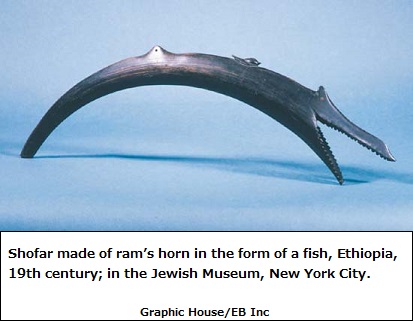
Belief in the magical properties of instruments is found in many societies. The Jewish shofar (a ram's horn), which is still blown on Rosh Hashana (New Year) and Yom Kippur (Day of Atonement), must be heard by the congregation. The power of the shofar is illustrated by the story of Joshua at the siege of Jericho: when the priests blew their shofars seven times, the walls of the city fell flat. In India, according to legend, when the deity Krishna played the flute, the rivers stopped flowing and the birds came down to listen. The birds are said to have done the same in 14th-century Italy when the composer Francesco Landini played his organetto, or portative organ. In China, instruments were identified with the points of the compass, with the seasons, and with natural phenomena. The Melanesian bamboo flute was a charm for rebirth.
Many of the instruments used in medieval Europe came from western Asia, and they have retained some of their original symbolism. For example, trumpets, long associated with military operations, had a ceremonial function in the establishment of European kings and nobles and were, in fact, regarded as a sign of nobility. In the later Middle Ages and for long afterward, they were associated with kettledrums (known originally as nakers, after their Arab name, naqqa-rah), which were often played on horseback, as they still are in some mounted regiments. Trumpet fanfares, heard on ceremonial occasions in the modern world, are a survival of medieval practice.
Technological developments
Conventional Western thinking claimed that the earliest instruments were slightly modified natural objects such as bones, shells, or gourds. They played only one pitch and then evolved into more complex forms. However, it appears that bone flutes from Neanderthal caves had finger holes, and recent archaeological finds in China included bone flutes from 7000 BC that not only have seven finger holes but an additional aperture that may have been drilled to correct a poorly placed hole. Thus, early humans appear to have been just as sensitive to pitch and tone colour as were most other sentient creatures, such as birds, cats, dogs, and whales. None of the sounds they heard or made moved from simple to complex. Aztec clay versions of shell trumpets imitated the internal chambers of the nautilus; the instruments' construction may indicate a sophisticated use of the overtone series to obtain varied pitches (as is done on the bugle).
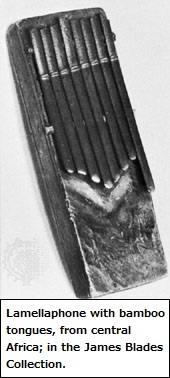
The stretched string of a bow can produce several pitches when it is beaten, and the string can be stopped at points along its length to produce varied sounds. In addition, a resonator such as a pot or gourd is often used to increase the volume of the sound. The player's mouth can add variety to both volume and pitch. A tube of bamboo can become musical when it is struck on the ground, and a set of different-sized tubes can produce a melodic and rhythmic ensemble. Lifting strips of the bark from a tube and adding bridges under the strips creates a melodic zither, for which each strip produces a separate pitch. The sound can be enhanced by placing one end of the tube in a resonator, whether a gourd or a tin can. In sum, the complexity of music depends less on technology than on human imagination. The first step in the building of any instrument is the selection and preparation of material. Wood used for wind or stringed instruments needs to be seasoned, as do the reeds used in oboes, clarinets, saxophones, and related instruments. Metals, which are widely used for strings, bells, cymbals, gongs, trumpets, and horns, must be manufactured and cast—often originally by secret processes. Next, the construction and tuning of all instruments require skill and craftsmanship: the piercing of a tube to a uniform or expanding width, the flaring of the bell of a wind instrument to increase sonority, the measurement of the bars of a saron (for the Javanese gamelan) or of a glockenspiel, the curvature of the back of a lute or ?u-d, the internal and external structure of the body of a violin, a koto, or even a shakuhachi. All of these involve accurate workmanship from experts in wood and metal and, in many instances, a knowledge of the mathematics of sound.
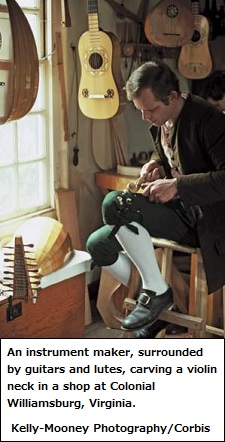
The mathematical basis of accurate tuning systems has been the subject of philosophical and scientific speculation since ancient times; nevertheless, no single system has been deemed perfect. All practical tuning systems involve a series of compromises, a fact that instrument makers have known for centuries.
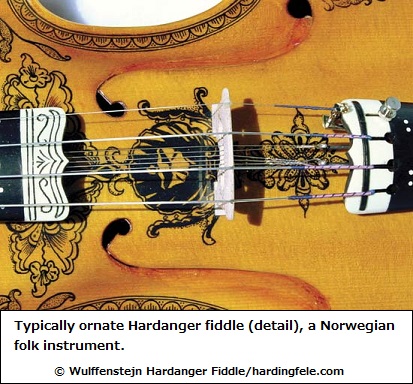
The instrument maker's skill, like that of the cabinetmaker and the silversmith, was developed by long practice, and the principles that determine both tone and intonation were discovered by trial and error. The growth of instrumental playing in 16th-century Europe stimulated the production of instruments to be used not merely for ceremonial and official entertainment but also for social occasions and private pleasure. From this time, records began to be kept of the names of makers, many of whom established family businesses that lasted for several generations. These include, for example, Andrea Amati (16th century), a violin maker in Cremona, Italy; Hans Ruckers (late 16th century), a harpsichord maker in Antwerp, Belgium; and Johann Haas (1649–1723), a trumpet maker in Nürnberg (now in Germany). In all literate cultures there are known families or guilds of instrument makers, e.g., for the Middle Eastern ūd, South Asian sitar and vina, or Japanese tsuzumi drums. Around the world, instrument makers have long signed their products. Although similar respectful positions are held by instrument makers in cultures without a written record, their reputation is far less likely to spread beyond their particular time and place.
Instrument makers have always represented a blend of conservatism with the ability to quickly seize on and use a new constructional technique, a new tool, or a new material. Their contribution to both the history of music and the history of musical instruments has been enormous and little appreciated. The older makers of instruments were craftsmen who took delight in the appearance of their work. In some cases, additions are purely decorative, as when pictures were painted on the inside of harpsichord lids or elaborate patterns were carved onto Indian vinas or inlaid into Persian lutes and drums. The rare set of 9th-century court instruments found in Nara, Japan, includes stunning examples of such artisan skills from all over East Asia. Equal beauty is found on many of the anonymously constructed instruments of Oceania. Often these additions are symbolic or totemic; the patterns on the Australian didjeridu identify the clan of the performer, and shapes and patterns on instruments in New Guinea reflect aspects of the environment and culture. Similarly, the dragon heads on the end of Tibetan and Chinese woodwinds have a symbolic meaning in those cultures. Most modern Western instruments reject ornamentation, but overall design and finish are as important as they have always been.
Modern technology has in many cases simplified or improved the construction of instruments. In the past, for example, the tubes of horns and trumpets were made from a sheet of brass cut to the right width, which was rolled into shape, leaving the edges to be joined by brazing. In modern manufacture the tube is drawn in one piece, and there is no seam. Evolution of design has been particularly notable in the construction of woodwind instruments, not only in the fixing of the metal keys and the mechanism that controls them but also in the piercing of holes in such a way that they are acoustically correct. This achievement was due mainly to the pioneering work of Theobald Boehm, who was not only a flute maker but also a performer and composer. His system, designed for the flute, was later applied to the clarinet, the oboe, and the bassoon. The early 19th century saw a revolution in the manufacture of brass instruments as well: the addition of pieces of tubing of different lengths through which the air could be directed by the depression of valves (or pistons), enabling an instrument to produce all 12 notes of the chromatic scale, in place of its earlier limitation to the notes of the natural harmonic (overtone) series. Newer techniques of cutting and beating metal have created distinctive modern instruments, such as steel drums.
The discovery of plastics in the 20th century also has influenced the manufacturers of instruments; for example, some makers have used plastic instead of quill or leather for the plectra that pluck the strings of the harpsichord, and plastic recorders have been built. Mechanization has made possible the mass production of instruments of all kinds. Insofar as this makes it possible for people to acquire an instrument at a moderate price, mass production is a good thing, and in education it has been beneficial to schools working on a small budget. A natural development has been the provision of kits consisting of the separate parts of an instrument, which can then be assembled by the purchaser. It remains true, however, that the production of an instrument of the finest quality still demands the highest degree of individual skill. A violin glued together from mass-produced parts cannot be the equal of one that has been meticulously constructed from the first by an individual craftsman who will not be satisfied with his work until every detail of it has been tested.
Technology has been of service to music by providing composers with instruments they have asked for, by eliminating some defects of instruments, and by making instruments more widely available to the community in general. Richard Wagner, for example, suggested the need for a baritone double-reed instrument akin to the oboe; the resulting heckelphone has been featured in Richard Strauss's opera Salome (1905) and subsequent works. Wagner also ordered a special type of tuba for use in his four-opera cycle Der Ring des Nibelungen (The Ring of the Nibelung, 1869–76). Not all modern changes in construction have been wholly advantageous, however. It is easier to play in tune on a modern woodwind instrument, but the older examples, being less cluttered with metal fittings, had a purer tone. Similarly, the modern horn is to most listeners inferior in tone quality to its 18th-century predecessor. Among Western orchestral instruments, only the trombone and the stringed instruments have remained, apart from minor modifications, unchanged in structure over the centuries (though the substitution of wire strings for gut has materially altered the tone of the violin). In contrast, the rate of technological change in electronic instruments has been almost bewilderingly fast.
Classification of instruments
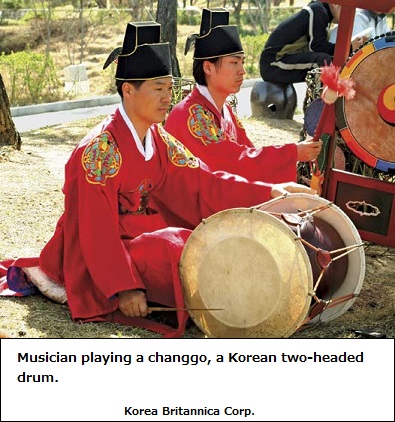
Instruments have been classified in various ways, some of which overlap. The Chinese divide them according to the material of which they are made‐as, for example, stone, wood, silk, and metal. Writers in the Greco-Roman world distinguished three main types of instruments: wind, stringed, and percussion. This classification was retained in the Middle Ages and persisted for several centuries: it is the one preferred by some writers, with the addition of electronic instruments, at the present day. Some 16th-century writers excluded certain instruments from this classification; the musical theorist Lodovico Zacconi went so far as to exclude all percussion instruments and established a fourfold division of his own—wind, keyed, bowed, and plucked.
A different fourfold classification was accepted by Hindus at least as early as the 1st century BC: they recognized stringed instruments, wind instruments, percussion instruments of wood or metal, and percussion instruments with skin heads (i.e., drums). This ancient system—based on the material producing sound—was adopted by the Belgian instrument maker and acoustician Victor-Charles Mahillon, who named his four main classes autophones, or instruments made of a sonorous material that vibrates to produce sound (e.g., bells, rattles); membranophones, in which a stretched skin is caused to vibrate (e.g., drums); aerophones, in which the sound is produced by a vibrating column of air (wind instruments); and chordophones, or stringed instruments. In their highly influential studies of musical instruments, the Austrian musicologist Erich von Hornbostel and his German colleague Curt Sachs accepted and expanded Mahillon's basic division, creating the classification now used in most systematic studies of instruments. The name idiophones was substituted for autophones, and each class was subdivided according to a method similar to that used by botanists. A fifth class, electrophones, in which vibration is produced by oscillating electric circuits, was added later. The Table gives examples of instruments that fall within the various categories.
| Idiophones | |
| Struck | |
| Against each other: | cymbals, castanets |
| With a beater: | triangle, glockenspiel, xylophone, slit drums |
| Shaken: | rattle, jingles |
| Scraped: | Scraper |
| Plucked: | jew's harp, music box |
| Rubbed: | musical glasses |
| Membranophones | |
| Struck: | side drum, bass drum, timpani |
| Rubbed: | friction drum |
| Blown: | mirliton (or kazoo) |
| Chordophones | |
| Zithers | |
| Plucked: | |
| Struck: | hammered dulcimer, piano |
| Lutes | |
| Plucked: | lute, guitar |
| Bowed: | violin, viola da gamba |
| Lyres | |
| Plucked: | Greek kithara, Ethiopian beganna |
| Bowed: | Welsh crwth |
| Harp: | Celtic small harp, orchestral chromatic harp |
| Aerophones | |
| Free (air not confined) | |
| Without Keyboard: | bull-roarer, harmonica |
| With Keyboard: | harmonium, melodeon |
| Flutes (air blown against an edge) | recorder, flute |
| Reedpipes | |
| Single Reed: | clarinet, saxophone |
| Double Reed: | shawm, crumhorn, oboe, bassoon, sarrusophone |
| Lipped (air blown through player's vibrating lips) | horn, cornet, trumpet, trombone, tuba, serpent |
| Electrophones | |
| Monophonic (producing a single line of melody) | theremin, trautonium, ondes martenot |
| polyphonic (producing harmony and simultaneous melodic lines) | many synthesizers |
Many instruments can be played using more than one system of tone production and hence might reasonably appear in several subcategories. The double bass, for example, is usually considered a chordophone whose strings may be bowed or plucked; sometimes, however, the body of the instrument is slapped or struck, placing the double bass among the idiophones. The tambourine is a membranophone insofar as it has a skin head which is struck; but, if it is only shaken so that its jingles sound, it should be classed as an idiophone, for in this operation the skin head is irrelevant. Open flue stops are the foundation of organ tone, but the instrument also has a number of free reed stops, so that the organ belongs equally to the first and second order of aerophones. Modern composers not infrequently require players to treat their instruments in unorthodox ways, thus changing their position in the classification system.
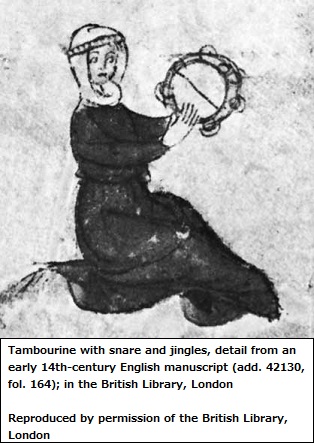
It must be understood that the Sachs-Hornbostel system was created for the purpose of bringing order to the massive collections of musical instruments in ethnographic museums. It is directly analogous to the various book classification systems of libraries and, like them, is arbitrary. Musicians themselves generally think of instruments in terms of their technological features and playing method. To them, therefore, it is logical to group keyboard instruments together, ignoring the fact that in the Sachs-Hornbostel system such instruments fit into several categories.
History and evolution

There has been speculation about the origin of instruments since antiquity. Older writers were generally content to rely on mythology or legends. In the 19th century, partly as a result of theories of evolution put forward by Charles Darwin and Herbert Spencer, new chronologies based on anthropological evidence were advanced. The British writer John Frederick Rowbotham argued that there was originally a drum stage, followed by a pipe stage, and finally a lyre stage. The Austrian writer Richard Wallaschek, on the other hand, maintained that, although rhythm was the primal element, the pipe came first, followed by song, and the drum last. Sachs based his chronology on archaeological excavation and the geographic distribution of the instruments found in them. Following this method, he established three main strata. The first stratum, which is found all over the world, consists of simple idiophones and aerophones; the second stratum, less widely distributed, adds drums and simple stringed instruments; the third, occurring only in certain areas, adds xylophones, drumsticks, and more complex flutes. In the 21st century, ethnomusicologists have questioned assumptions about the evolution of instruments from simple to complex; (see above Technological developments).
The development of musical instruments among ancient high civilizations in Asia, North Africa, and the Mediterranean appears to have emphasized stringed instruments. In Central and South America, wind and struck instruments seem to have been most important. It is not always easy to say whether instruments are indigenous to a particular area, however, since their cultivation may well have spread from one country to another through trade or migration. Nevertheless, it is known that the harp was used from early times in Mesopotamia, Egypt, and India and was imported into China after the end of the 4th century AD. In Greece it was regarded as a foreign instrument: the standard plucked instrument was the lyre, known in its fully developed form as the kithara (or cithara). Apart from the trumpet, the only wind instrument in normal use in Greece was the aulos, a double-reed instrument akin to the modern oboe. The Egyptians used wind instruments not only with double reeds but also with single reeds and thus may be said to have anticipated the clarinet. Peculiar to China was the sheng, or mouth organ; the Chinese also used as an artistic instrument the panpipes (xiao), which in Greece had a recreational function.
In medieval Europe, many instruments came from Asia, having been transmitted through Byzantium, Spain, or eastern Europe. Perhaps the most notable development in western Europe was the practice, originating apparently in the 15th century, of building instruments in families, from the smallest to the largest size. A typical family was that of the shawms, which were powerful double-reed instruments. A distinction was made between haut (loud) and bas (soft) instruments, the former being suitable for performance out-of-doors and the latter for more intimate occasions. Hence, the shawm came to be known as the hautbois (loud wood), and this name was transferred to its more delicately toned descendant, the 17th-century oboe. By the beginning of the 17th century the German musical writer and composer Michael Praetorius, in his Syntagma musicum ("Musical Treatise"), was able to give a detailed account of families of instruments of all kinds—recorders, flutes, shawms, trombones, viols, and violins.
Percussion instruments
Drum ensembles have achieved extraordinary sophistication in Africa, and the small hand-beaten drum is of great musical significance in western Asia and India. The native cultures of the Americas have always made extensive use of drums, as well as other struck and shaken instruments. In Southeast Asia and parts of Africa, xylophones and, since the introduction of metals, their cousins the metallophones play significant roles. Europe, however, has not placed great emphasis on drums and other percussion instruments.
Stringed instruments
Many varieties of plucked instruments were found in Europe during the Middle Ages and the Renaissance; but bowed instruments eventually came to characterize the area, and they played an important role in the rest of Eurasia and in North Africa as well. The idea of playing a stringed instrument with a bow may have originated with the horse cultures of Central Asia, perhaps in the 9th century AD. The technique then spread rapidly over most of the European landmass.
The European fiddle existed in various forms: by the 16th century these had settled down into two distinct types—the viol, known in Italy as viola da gamba (leg fiddle), and the violin, or viola da braccio (arm fiddle). The viol has a flat back, sloping shoulders, and six or seven strings; the violin has a rounded back, rounded shoulders, and four strings. The viol, unlike the violin, has frets—pieces of gut wound at intervals around the fingerboard—which make every stopped note (i.e., the string being pressed by the finger to produce a higher pitch) sound like an open (unstopped) string. The violin, being the smallest member of the family, came to be known by the diminutive violino: the tenor of the family was called simply viola, while the bass acquired the name violoncello, a diminutive of violone ("big fiddle").
Keyboard instruments
Only in Europe did the keyboard develop—for reasons that are not clear. The principle of the keyboard has been used successfully to control bells (the carillon), plucked and struck stringed instruments (the piano and harpsichord), and wind instruments (the organ, the accordion, and the harmonium).
Of all instruments, the organ showed the most remarkable development from the early Middle Ages to the 17th century. Originally, sound was admitted to the pipes by withdrawing sliders or depressing levers. Both of these methods were clumsy: they gave way to a reduction in the size of the levers, which eventually could be depressed by the fingers, while the larger pipes were controlled by pedals. A further development was to separate the various rows of pipes, so that each row could be brought into action or suppressed by means of a draw stop. Once a manageable keyboard had been produced, it could be applied to the portable organ, carried by the player, which was already in use by the 12th century. Scientific experiments with the monochord, a stretched string that could be divided into various lengths by means of a metal tangent, were followed by the construction of an instrument with a whole range of strings and a keyboard similar to that of the organ—the clavichord. A similar adaptation of the plucking of stringed instruments led to the harpsichord, the ingenious mechanism of which had been perfected by the 16th century. It is curious that a similar method was not applied to the dulcimer, which was struck with hammers, until the early 18th century, when the Italian maker Bartolomeo Cristofori constructed the first pianoforte, so-called because, unlike the harpsichord, it could vary the tone from soft (piano) to loud (forte).
Wind instruments
In Europe the practice of constructing instruments in families continued from the 17th century onward. English composers wrote for the tenor hautbois, the intermediate oboe d'amore, and the bass, or baritone, oboe. The clarinet (the name means "little trumpet") emerged at the end of the 17th century and, like the oboe, developed into a family extending to a contrabass clarinet in the 19th century and later a subcontrabass. It established itself only gradually in the orchestra in the course of the 18th century.
Trumpets and horns were used in most areas of Eurasia for ceremonial and military purposes. They remained relatively unchanged until the early 19th century, when valves were added to European instruments. This modification also led to the creation of new types. A pioneer in the field was the Belgian instrument maker Antoine-Joseph Sax, who in 1845 built a family of valved instruments called saxhorns, using the bugle as the basis for his invention. Similar instruments were widely adopted in military and brass bands, but only the bass, under the name bass tuba, became a normal member of the orchestra. Sax also invented the saxophone, a single-reed instrument like the clarinet but with a conical tube. This, too, was made in various sizes, which came to be used both in military bands and in jazz ensembles. The saxophone never became a normal member of the symphony orchestra, but the alto and the tenor have been used by art-music composers, largely as solo instruments, and occasionally a complete quartet of four different sizes has appeared in an orchestral work.
Ensembles
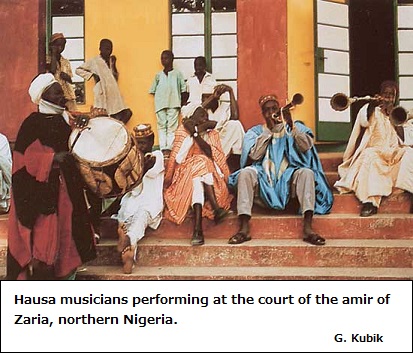
The variety of musical ensembles used throughout the world is vast and beyond description, but the following principles apply nearly everywhere. Outdoor music, which is often ceremonial, most frequently involves the use of loud wind instruments and drums. Indoor music, which is more often intended for passive listening, emphasizes such quieter instruments as bowed and plucked strings and flutes.
The establishment of orchestras, as opposed to chamber groups, in the early 17th century led to a slight revision of these principles in Europe. The orchestra's sound is founded on a large ensemble of bowed strings, but it adds the previously outdoor instruments (wind and percussion) for colour and climax. As concert halls increased in size and popularity, so too did the sound-volume requirements of so-called indoor instruments. One result was that the violin family was favoured at the expense of the quieter viols. The latter, along with other instruments whose tone was too weak for orchestral music, gradually dropped out of use until the 20th century, when earlier styles of music and their associated instruments experienced a revival in popularity.
Automatic instruments
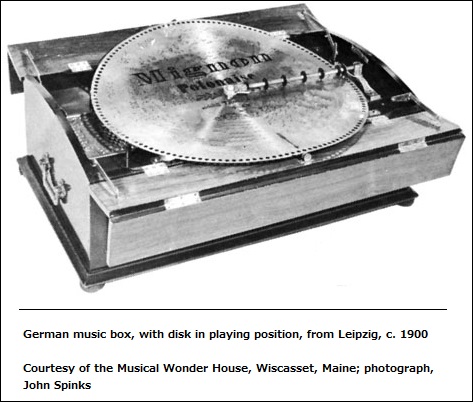
Water power, clockwork, steam, and electricity have all been used at various times to power musical instruments, enabling them to produce sound automatically. Examples include church bells, automatic organs, musical clocks, automatic pianos and harpsichords, music boxes, calliopes, and even automatic orchestras. Most of the impetus behind this phenomenon ceased with the development of the phonograph and other recording devices of the 20th century.
Electric and electronic instruments
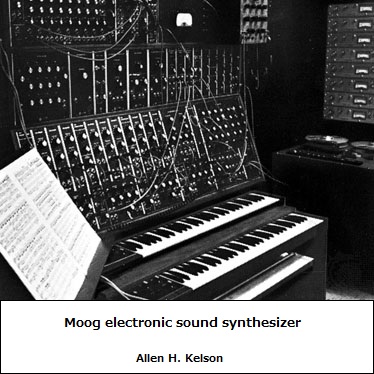
The development of electricity led not only to its use for mechanical purposes—for example, to control the key action and wind flow in the organ—but also as a means of amplification (e.g., in the vibraphone). With advances in electronics technology, players can now also make use of computers to generate and store tones and musical patterns. The growth of companies manufacturing electronic and digital instruments has been rapid, and the use of electronic equipment, such as sound synthesizers and recorders using analog or digital media, to produce and combine sound unrelated to the musical scale has become common.
Sir Jack Allan Westrup Ed.:Theodore C. Grame Ed.:
Additional Reading
Comprehensive information on diverse musical instruments is found in such authoritative reference sources as:
- Don Michael Randel, The New Harvard Dictionary of Music, 4th ed. (2003);
- New Oxford History of Music, 10 vol. (1954–90), with various reprints and reissues of individual volumes (1976–97);
- Stanley Sadie (ed.), The New Grove Dictionary of Musical Instruments, 3 vol. (1984, reprinted 1997);
- Bruno Nettl et al. (eds.), The Garland Encyclopedia of World Music, 10 vol. (1998–2002);
- Q. David Bowers, Encyclopedia of Automatic Musical Instruments (1972);
- Richard Dobson, A Dictionary of Electronic and Computer Music Technology: Instruments, Terms, Techniques (1992).
History and evolution of musical instruments are studied in many well-illustrated works, including:
- J. Peter Burkholder, Donald Jay Grout, and Claude V. Palisca, A History of Western Music, 7th ed. (2006);
- Giovanni Comotti, Music in Greek and Roman Culture (1989; originally published in Italian, 1979);
- Thomas J. Mathiesen, Apollo's Lyre: Greek Music and Music Theory in Antiquity and the Middle Ages (1999);
- David Munrow, Instruments of the Middle Ages and Renaissance (1976);
- Sibyl Marcuse, A Survey of Musical Instruments (1975);
- Anthony Baines (ed.), Musical Instruments Through the Ages, new ed. (1976);
- Robert Donington, Music and Its Instruments (1982);
- Curt Sachs, The History of Musical Instruments (1940, reprinted 1968);
- Jeremy Montagu, The World of Medieval and Renaissance Musical Instruments (1976), The World of Baroque and Classical Musical Instruments (1979), and The World of Romantic & Modern Musical Instruments (1981).
Physical properties of the instruments are addressed in:
- Reinhold Banek and Jon Scoville, Sound Designs: A Handbook of Musical Instrument Building (1980, reissued 1995);
- Charles Ford (ed.), Making Musical Instruments: Strings and Keyboard (1979);
- Dennis Waring, Folk Instruments (1979, reprinted as Making Folk Instruments in Wood, 1982, and as Making Wood Folk Instruments, 1990);
- Neville H. Fletcher and Thomas D. Rosing, The Physics of Musical Instruments, 2nd ed. (1998, reissued 2005).
Exhibitions and collections are the source of useful and well-illustrated information. A selection of catalogs includes:
- Phillip T. Young, The Look of Music: Rare Musical Instruments, 1500–1900 (1980);
- Laurence Libin, American Musical Instruments in The Metropolitan Museum of Art (1985);
- James M. Borders, European and American Wind and Percussion Instruments: Catalogue of the Stearns Collection of Musical Instruments, University of Michigan (1988);
- Clifford Bevan, Musical Instrument Collections in the British Isles (1990);
- James Coover, Musical Instrument Collections: Catalogues and Cognate Literature (1981).
Geographic and ethnic distribution of musical instruments is explored in:
- Nicholas Bessaraboff, Ancient European Musical Instruments (1941, reissued 1964);
- Emanuel Winternitz, Musical Instruments of the Western World (1967);
- Jaap Kunst, Music in Java, 3rd ed., rev. by E.L. Heins, 2 vol. (1973; originally published in Dutch, 1934);
- William P. Malm, Japanese Music and Musical Instruments (1959, reissued 1990),
- Music Cultures of the Pacific, the Near East, and Asia, 2nd ed. (1977);
- S. Bandyopadhyaya, Musical Instruments of India (1980);
- Marie-Thérèse Brincard (ed.), Sounding Forms: African Musical Instruments (1989);
- Mary Remnant, Musical Instruments of the West (1978);
- Emanuel Winternitz, Musical Instruments and Their Symbolism in Western Art (1967, reissued 1979).
The process of arranging music for particular instruments and combinations of instruments is discussed in:
- Howard Mayer Brown, Sixteenth-Century Instrumentation: The Music for the Florentine Intermedii (1973);
- Claude V. Palisca, Baroque Music, 3rd ed. (1991), surveying the seminal period in the development of concerted music;
- Adam Carse, The History of Orchestration (1925, reissued 1964);
- Hector Berlioz, Treatise on Instrumentation, rev. and enlarged by Richard Strauss (1948; originally published in French, 1844);
- Nicolas Rimsky-Korsakow (Nikolay Rimsky-Korsakov), Principles of Orchestration, trans. from Russian (1923, reissued 1964);
- Michael Hurd, The Orchestra (1980);
- Madeau Stewart, The Music Lover's Guide to the Instruments of the Orchestra (1980);
- Joan Peyser (ed.), The Orchestra: Origins and Transformations (1986);
- Mark C. Gridley and David Cutler, Jazz Styles: History & Analysis, 8th ed. (2003).
Current developments and research in the field are reflected in the articles of such special periodicals as:
- The Galpin Society Journal (annual);
- Journal of the American Musical Instrument Society (annual);
- The Musical Quarterly;
- Early Music (quarterly);
- Ethno-musicology (3/yr.);
- Asian Music (semiannual).
Date of Origination: Wednesday, 12-April-2017... 03:37 AM
Date of initial posting: Tuesday, 25-April-2017... 11:23 AM Updated posting: Saturday, 31-March-2018... 12:55 PM